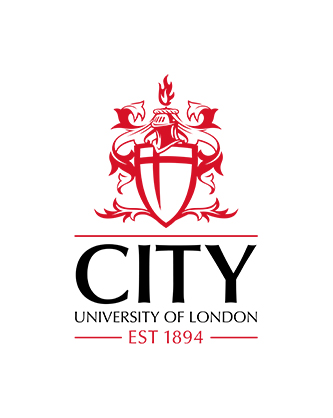Teleophthalmology versus standard of care for community optometry referrals of retinal disease (HERMES): a cluster randomised controlled trial with linked prospective diagnostic accuracy assessment of artificial intelligence support
Sharma, A., Hussain, R., Learoyd, A. E. , Aristidou, A.  ORCID: 0000-0002-0290-4244, Soomro, T., Blandford, A., Lawrenson, J. G.
ORCID: 0000-0002-0290-4244, Soomro, T., Blandford, A., Lawrenson, J. G.  ORCID: 0000-0002-2031-6390, Grimaldi, G., Douiri, A., Kernohan, A., Robinson, T., Moradi, N., Dinah, C., Minos, E.
ORCID: 0000-0002-2031-6390, Grimaldi, G., Douiri, A., Kernohan, A., Robinson, T., Moradi, N., Dinah, C., Minos, E.  ORCID: 0000-0002-0033-134X, Aslam, T., Manna, A.
ORCID: 0000-0002-0033-134X, Aslam, T., Manna, A.  ORCID: 0009-0005-2227-8550, Denniston, A. K., Patel, P. J., Keane, P. A., Bunce, C., Vale, L. & Balaskas, K.
ORCID: 0009-0005-2227-8550, Denniston, A. K., Patel, P. J., Keane, P. A., Bunce, C., Vale, L. & Balaskas, K.  ORCID: 0000-0002-7690-6277 (2025).
Teleophthalmology versus standard of care for community optometry referrals of retinal disease (HERMES): a cluster randomised controlled trial with linked prospective diagnostic accuracy assessment of artificial intelligence support.
The Lancet Primary Care, 1(4),
article number 100041.
doi: 10.1016/j.lanprc.2025.100041
ORCID: 0000-0002-7690-6277 (2025).
Teleophthalmology versus standard of care for community optometry referrals of retinal disease (HERMES): a cluster randomised controlled trial with linked prospective diagnostic accuracy assessment of artificial intelligence support.
The Lancet Primary Care, 1(4),
article number 100041.
doi: 10.1016/j.lanprc.2025.100041
Abstract
Background
Telemedicine can support integrated care between community and hospital services for disease management, potentially enhanced by medical artificial intelligence (AI). Common retinal disease exemplifies this opportunity. Optometry-to-hospital referral pathways generate unnecessary visits, exacerbating hospital pressures. Evidence for the effectiveness of teleophthalmology and AI in optimising these pathways is scarce.
Methods
This cluster randomised controlled trial was done at optometry practices that referred to four hospital sites in the UK and that were randomly assigned (1:1) to standard care or teleophthalmology using random permuted blocks of varying sizes stratified by hospital site. Statisticians were masked to group assignment for the primary analysis. Individuals aged 18 years or older with suspected macular disease and good quality optical coherence tomography (OCT) scans were included; same-day emergency cases were excluded. In the teleophthalmology group, OCT scans were remotely reviewed by hospital clinicians; the standard care group followed standard referral pathways. The primary outcome was false-positive referral rate (unnecessary overall or urgent [ie, <2 weeks] referrals) against an independent reference standard, analysed in the enrolled and referred populations (superiority margin 30%) using a modified intention-to-treat analysis. A parallel prospective, observational, diagnostic accuracy (validation) study evaluated automated referral recommendations by the Moorfields-DeepMind-AI model, assessing sensitivity and specificity. This trial is registered with ISRCTN.com (ISRCTN18106677) and is closed.
Findings
Between Jan 26, 2021, and Dec 14, 2022, 71 optometry sites were assessed for eligibility and 26 recruited and randomly assigned to standard care (13 sites) or teleophthalmology (13 sites). Between July 5, 2021, and March 31, 2023, 304 participants were recruited, of whom 294 were included in the analysis (136 in the standard care group and 158 in the teleophthalmology group; 127 [43%] of 294 participants were male, and 167 [57%] were female). Among all enrolled participants, false-positive referrals occurred in ten (7%) of 136 participants in the standard care group versus two (1%) of 158 in the teleophthalmology group (absolute difference 6% [95% CI –5 to 17]; odds ratio [OR] 6·16 [95% CI 1·28 to 58·80]; p=0·018); urgent false-positive referrals occurred in 24 (18%) of 136 versus one (1%) of 158 (17% [11 to 24]; OR 33·37 [5·28 to 1392·05]; p=0·0004). In referred participants only, false-positive referrals occurred in ten (8%) of 125 versus two (2%) of 124 (6% [–5 to 18]; OR 5·27 [1·09 to 50·52]; p=0·035); urgent false-positive referrals occurred in 24 (63%) of 38 versus one (4%) of 27 (59% [41 to 78]; OR 42·00 [5·69–1901·06]; p=0·0001). The superiority margin of a 30% reduction in false-positive referrals was met only for urgent referred cases. Moorfields-DeepMind-AI could process images from 204 (52%) of 396 participants with sensitivity and specificity of 96% (95% CI 92–99) and 20% (8–37), respectively, for all referrals, and 74% (54–89) and 90% (85–94), respectively, for urgent referrals. No serious adverse events occurred.
Interpretation
Teleophthalmology significantly reduced unnecessary urgent hospital referrals, the main source of capacity pressure in retinal care, demonstrating superiority among referred participants and supporting timely, safe care. Its impact on overall unnecessary referrals was inconclusive due to the low number of non-referred participants. When evaluable (in ∼50% participants), Moorfields-DeepMind-AI recommended more unnecessary referrals overall than clinically indicated. Simulating human experts, AI performed worse than hospital specialists in the teleophthalmology pathway, and similarly to community optometrists in standard care, probably reflecting differences between clinician judgement and fixed AI rules.
| Publication Type: | Article |
|---|---|
| Additional Information: | © 2025 The Author(s). Published by Elsevier Ltd. This is an open access article under the CC BY-NC-ND license (http://creativecommons.org/licenses/by-nc-nd/4.0/). |
| Subjects: | Q Science > QA Mathematics > QA75 Electronic computers. Computer science R Medicine > RA Public aspects of medicine R Medicine > RC Internal medicine R Medicine > RE Ophthalmology |
| Departments: | School of Health & Medical Sciences School of Health & Medical Sciences > Department of Optometry & Visual Science |
| SWORD Depositor: |
Available under License Creative Commons Attribution Non-commercial No Derivatives.
Download (399kB) | Preview
Export
Downloads
Downloads per month over past year


 Metadata
Metadata Metadata
Metadata